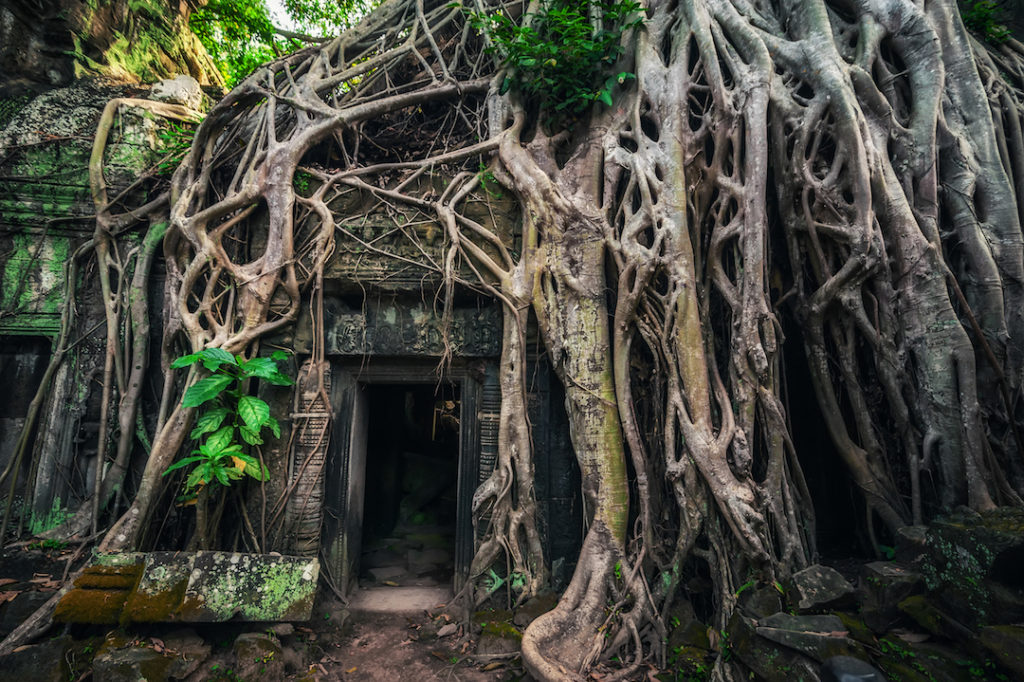8 Interesting Facts About Angkor Wat in Cambodia
ABOUT
At Our Whole Village, we plan meaningful vacations for families who want to create lifelong memories and show their kids the world in a more conscious and intentional manner.
WORK WITH US
We help families take meaningful vacations so that they can escape everyday life, show their kids the world and make lifelong memories - with care, confidence and peace of mind.
THE BEST FAMILY VACATIONS BY AGE
Your (free) guide to the top travel destinations for families with babies, teens and everyone in between.
DOWNLOAD NOW
ABOUT US
April 13, 2019
Did you know that Angkor Wat remains the largest religious complex in the world? In fact, it measures four times larger than Vatican City in Rome. A UNESCO World Heritage site, it represents one of the most popular tourist attractions in Cambodia. But many people forget that it’s also a highly sacred site integral to Buddhist worship to this day. And its roots as a Hindu temple of the Khmer Empire remain undeniable.
Ready to learn more interesting facts about Angkor Wat? Let’s see how much of this fascinating trivia you already know.
1. A Monumental Feat
Angkor Wat stretches for more than 248 square miles (400 square kilometers) and includes many famous temples. The site required more than 5.5 million tons of sandstone to construct. That’s more stone than the Egyptians used to build all of their pyramids combined! What’s more, the sandstone for the Cambodian structures came from a stone quarry some 25 miles away, making the construction of this ancient wonder one of the most ambitious, monumental feats in human history.

2. An Unusual Alignment
Researchers still have a lot to figure out when it comes to Angkor Wat. Unlike other Hindu temples oriented to the east, Angkor Wat’s architecture points towards the west. What’s more, its bas-relief artwork reads counterclockwise. Finally, instead of being dedicated to a king, like other Hindu temple complexes, it was dedicated to the Hindu deity Vishnu.
3. A Name and an Image
What does the term “Angkor Wat” mean? It translates as the “City of Temples” or “Temple City,” which proves fitting given its historical function. Originally a sacred Hindu site, by the 13th century, it transitioned into a Buddhist center of worship, which it remains today. And Cambodia couldn’t be prouder of this ancient monument. An image of Angkor Wat has appeared on Cambodia’s flag since 1850, and the site is even featured on the riel, Cambodia’s national currency.

4. Gaining Recognition and Renown
The first written account of Angkor Wat by a foreigner came around 1312 from Chinese emissary Zhou Daguan. Daguan lived near the monument from 1296 to 1297. The first Westerner to see Angkor Wat was a Portuguese monk by the name of Antonio da Madalena. He visited what is modern-day Cambodia in 1586 and proved astounded by the place. But fame would not come to the area until the publication of French explorer Henri Mouhot’s book Travels in Siam, Cambodia, Laos, and Annam in the mid-19th century.
5. Cambodian Stardom
Hollywood made the vine-clad Ta Prohm temple located at Angkor Wat famous in 2001 with the release of Tomb Raider starring Angelina Jolie as Lara Croft. Shot on location, Paramount paid $10,000 per day in order to film there and spent a total of seven days at the site. Not only did the movie rake in millions, but it set Cambodia on a path of global recognition as a major tourist destination.

6. An Iconic Visitor
Angelina Jolie’s love of Cambodia has been well-publicized around the world. But she’s not the only celebrity to fall in love with this nation. Did you know that Jacqueline Kennedy risked a visit to Cambodia during the Vietnam War in order to cross one off her bucket list? It turns out that one of Jackie’s lifelong dreams was a visit to Angkor Wat. In 1967, she toured the famed monument on the invitation of King Sihanouk. What’s more, during her visit, she helped restore diplomatic ties between the United States and Cambodia, which had become strained as a result of the war in neighboring Vietnam.
7. The Wall that Time Forgot
While studying Angkor Wat, archaeologists have learned that the site was originally surrounded by a wall. This wall enclosed the temple, the city, and the royal palace. All told the original site measured approximately 203 acres (820,000 square meters). That said, nothing remains intact of the original wall today.

8. A Colorful Past
Built between 1113 and 1150 AD, the bricks used by the Khmer Empire to construct Angkor Wat were bonded together using a vegetable compound instead of mortar. As a result, this has endowed the buildings with nearly invisible bonding. And although Angkor Wat appears solemn and gray-hued today, scientists have discovered that its temple surfaces once shone with vibrant, painted images. In fact, the discerning eye can still catch glimmers of this paint on some of the temples today.
Interesting Facts About Angkor Wat
Did any of these interesting facts about Angkor Wat surprise you? Are you ready for your own Cambodia family adventure? Check out our Thailand & Cambodia Family Adventure, a culturally rich way to visit some of the most extraordinary destinations in Thailand and Cambodia with kids.
At Our Whole Village, we create transformational trips for curious families who want to create lasting memories while making a difference. We’re here to help you and your family experience the world, its peoples, and its cultures. Contact us today to learn more about the unforgettable experiences that we handcraft for curious families just like yours.
OUR SERVICES
HOME
COPYRIGHT © OUR WHOLE VILLAGE 2021
DESIGN BY GIRLBOSS DESIGNER | CUSTOMIZED BY ALEX COLLIER DESIGN
about
TRAVEL SERVICES
DESTINATIONS
BLOG
PLAN A TRIP
FREE TRAVEL GUIDE
TERMS AND CONDITIONS
hello@ourwholevillage.com
+1 305 432 2612